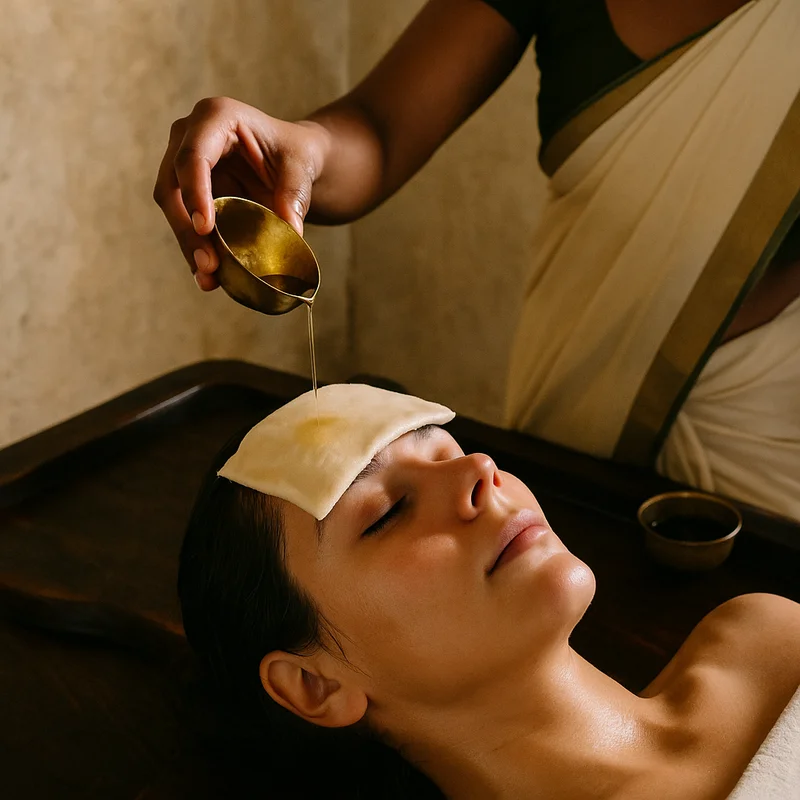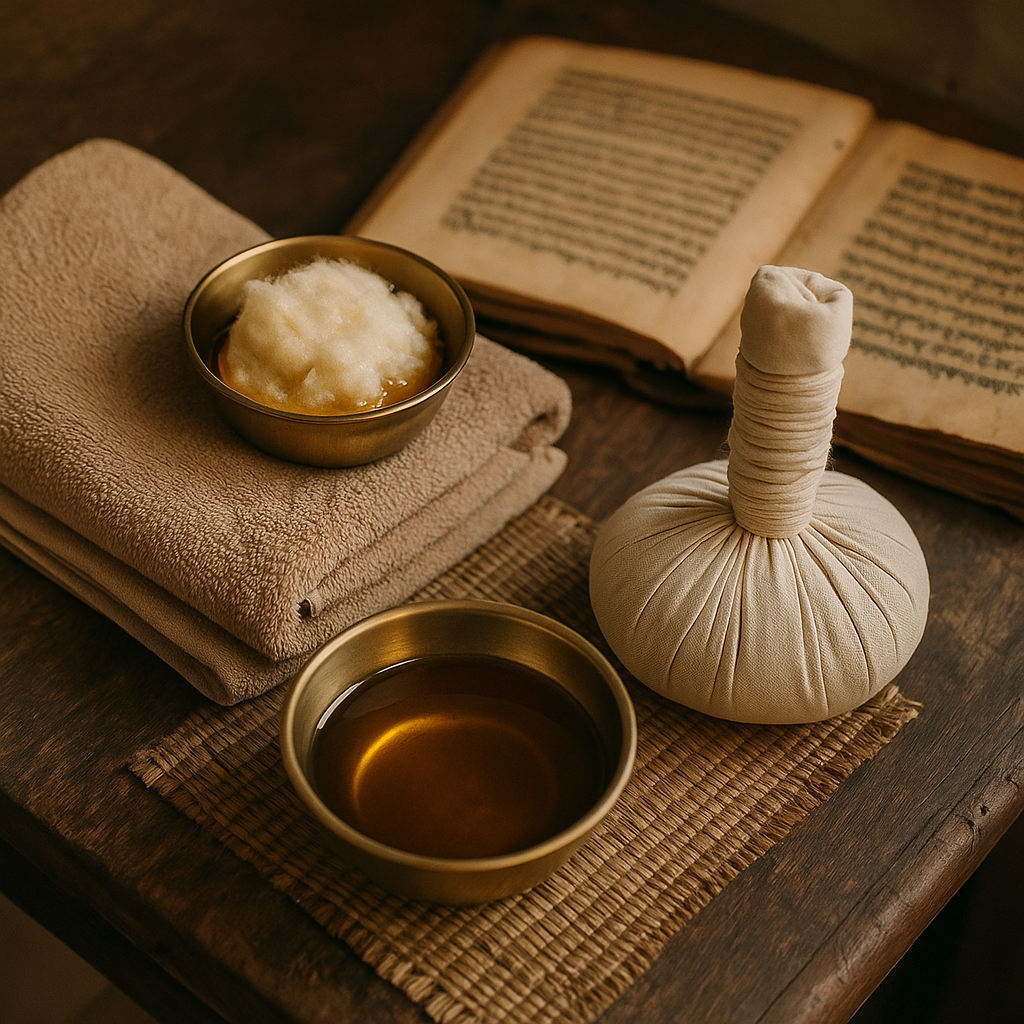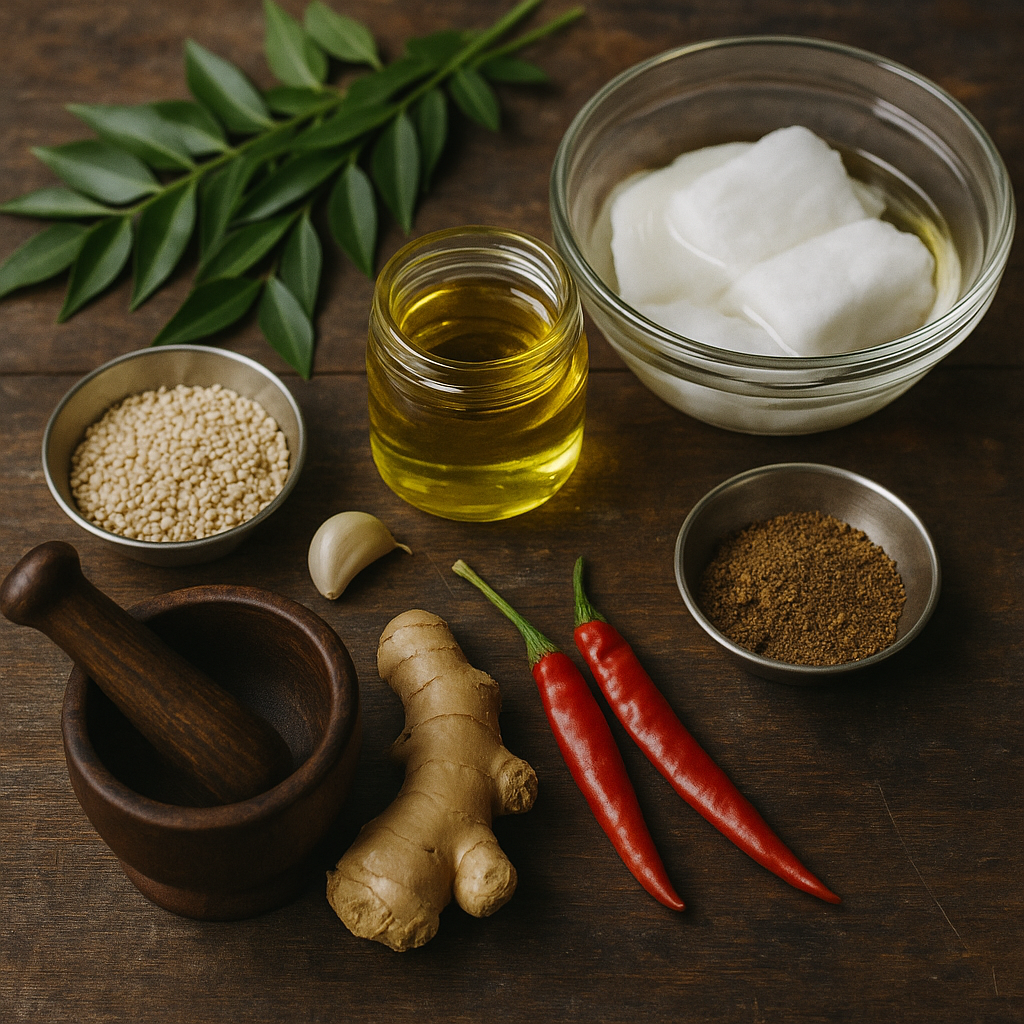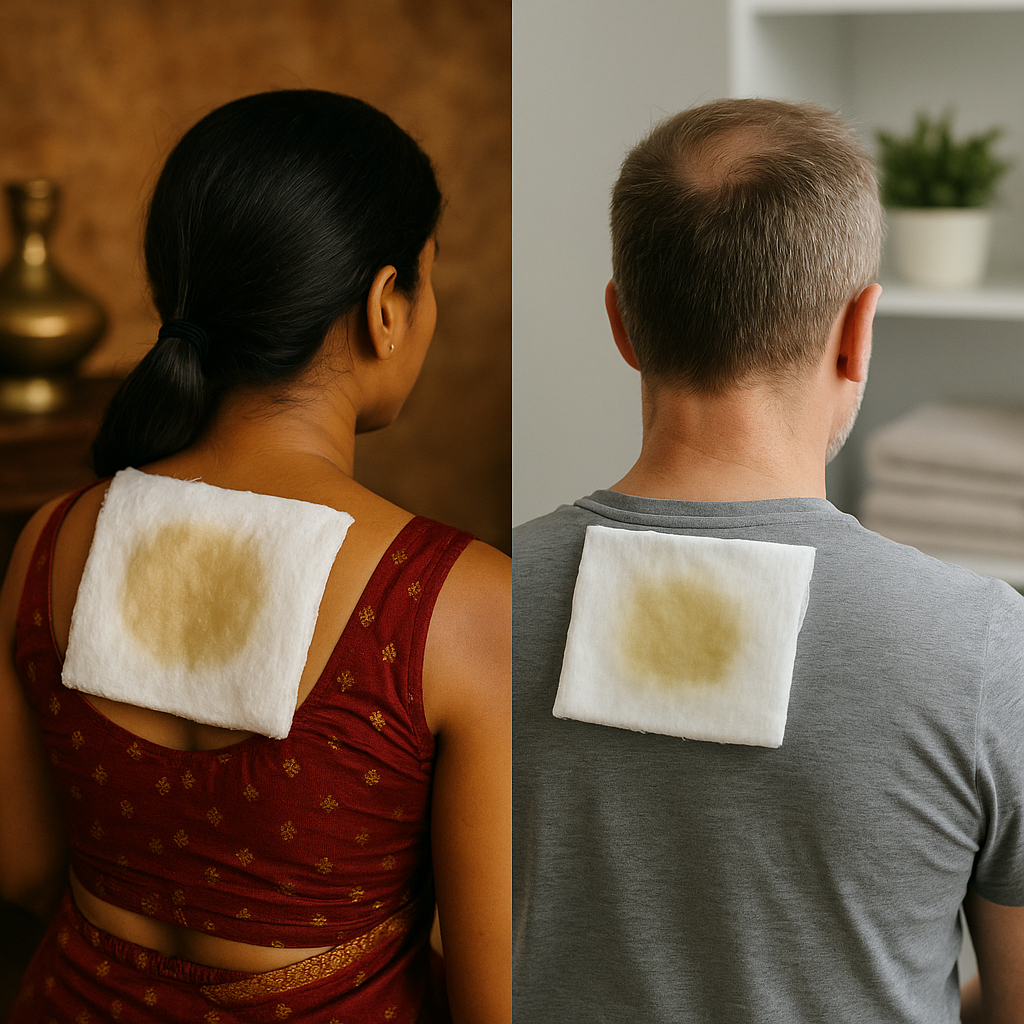Ask Ayurvedic doctor a question and get a consultation online on the problem of your concern in a free or paid mode. More than 2,000 experienced doctors work and wait for your questions on our site and help users to solve their health problems every day.
Shop Now in Our Store
Pichu in Ayurveda: A Deceptively Simple Yet Deeply Healing Therapy You’ve Probably Overlooked

Introduction to Pichu in Ayurveda
Let’s be honest — if you’re not deeply into Ayurveda, “Pichu” probably sounds like a mispronounced cartoon character. But here’s the thing: Pichu is one of the most deeply relaxing, restorative, and deceptively simple Ayurvedic therapies you can experience.
So what is it really?
In Ayurveda, Pichu is a local, external treatment where a thick piece of cloth or cotton pad soaked in warm medicated oil is placed over a specific area of the body — usually the head, spine, joints, or a region experiencing pain or imbalance. That’s it. No chants, no exotic apparatus, just warm oil, a piece of cloth, and some expert intention.
But the effect? Oh, it’s profound.
It’s like your nervous system just got wrapped in a hug from Mother Earth herself.
The name “Pichu” comes from Sanskrit, referring to something that absorbs — and that’s the clue. This therapy absorbs stress, vata imbalance, heat, or tension from the body and infuses the area with healing through medicated oils. It’s not about dramatic detox or flashy rejuvenation. It’s slow, quiet healing. And that’s why it works so well, especially in today’s overstimulated world.
Why Should You Care?
Pichu isn’t just some old-school thing we dust off for tradition’s sake. It’s still actively used in classical Panchakarma setups and integrative wellness centers — especially for neurological issues, joint pain, insomnia, emotional imbalance, and even trauma healing.
And this article? We’re going all in.
I’ll break down:
-
The rich, layered history of Pichu — where it comes from, and how it evolved
-
The surprising benefits (not just physical)
-
Detailed how-to’s if you’re curious to try it or recommend it
-
Scientific support — yes, that exists!
-
Real experiences that might sound eerily like your own
If you’ve been looking for something deeply grounding that doesn’t require 50 steps or an ashram trip — Pichu might be it.
Let’s dig in.

History and Origin of Pichu in Ayurveda
Historical Background and Roots of Pichu
Here’s the thing about Ayurveda — it doesn’t do anything by accident. Every therapy, even the simplest one, has centuries (sometimes millennia) of philosophical and medical reasoning behind it.
Pichu, though not as flamboyant as Shirodhara or as dramatic as Vamana, actually holds a quiet, ancient pedigree.
The therapy appears in classical Ayurvedic texts like the Charaka Samhita and Ashtanga Hridaya, primarily as part of Snehana — the oleation process that prepares the body for deeper detox or pacifies aggravated doshas.
Historically, Pichu was used by Vaidyas (Ayurvedic doctors) in rural India, where access to full-fledged Panchakarma facilities wasn’t always available. Instead, they adapted treatments using locally available herbs and oils and targeted application methods — like Pichu — to suit a person's constitution (prakriti), ailment, season, and mental-emotional state.
There’s a sort of DIY genius in how Pichu was applied — the idea being: “You don’t need a fancy clinic, just the right oil, the right pressure, and a little patience.”
Honestly, it reminds me of how my grandmother used to warm sesame oil and press it into my scalp with an old cotton rag when I had trouble sleeping — turns out, she was doing Pichu without even knowing it had a name.
Ayurvedic Textual References about Pichu
You’ll find Pichu mentioned in chapters related to external snehana (oil therapy) and Vata management in texts like:
-
Charaka Samhita (Sutra Sthana 13, Chikitsa Sthana 28)
-
Sushruta Samhita (Chikitsa Sthana 24)
-
Ashtanga Hridaya (Sutra Sthana and Nidana Sthana)
What’s interesting is that these references often group Pichu alongside basti (enema therapy), shirodhara (oil pouring on the head), and nasya (nasal therapy), particularly when treating neurological or vata disorders — which tells you how important this little therapy was considered.
One section even describes Pichu as "the soft yet steady hand of oil, able to pacify even the wildest of winds within" — poetic, right? But deeply accurate, too, in the Ayurvedic worldview where Vata governs movement, nerves, pain, and instability.
Traditional Use and Evolution of Pichu
Traditionally, Pichu wasn’t boxed into a single treatment module. It evolved fluidly, molded by local herbs, individual prakriti, and the practitioner’s intuition.
Some used it post-injury. Others during postpartum. Some Vaidyas used it for anxiety before that word even existed in popular vocabulary. And as society industrialized, some Ayurvedic doctors began adapting Pichu for office-goers — placing it over the neck and shoulder to combat computer strain and digital fatigue. A therapy that began centuries ago is now used to counteract screen-time. That’s poetic justice.
Today, modern Ayurvedic practitioners use Pichu in customized ways — from focused migraine relief to part of a pre-Panchakarma sequence. But even with modern spa lights and oils in glass dropper bottles, the soul of Pichu remains the same: gentle, deep, intentional healing through touch, oil, and time.
Purpose and Benefits of Pichu in Ayurveda
Physical Health Benefits of Pichu
Alright, so what’s the point of just sticking oil-soaked cotton on your body?
Surprisingly — a lot. Especially if you’re dealing with joint stiffness, nerve pain, muscle tightness, headaches, or spinal tension.
Pichu is designed to deliver oil directly to a targeted area, allowing deep penetration into the tissues (dhatus) and joints. The warmth softens stiffness, the oil lubricates and nourishes, and the herbs in the oil do their specific therapeutic magic — whether anti-inflammatory, calming, or nourishing.
Conditions commonly treated include:
-
Cervical spondylosis
-
Sciatica
-
Osteoarthritis
-
Migraines and tension headaches
-
Frozen shoulder
-
Spinal disc issues
People report feeling warmth and ease even after a single session. And when done consistently — say, as part of a treatment plan — it often results in sustained relief, without the side effects of painkillers or steroids.
Mental and Emotional Benefits of Pichu
Here’s the thing: Ayurveda never treats the body in isolation. And Pichu, though physically localized, somehow reaches into your psyche — especially when applied to the head (Shiro Pichu).
Many clients I’ve seen cry unexpectedly after a head Pichu — not from pain, but from release. Like something old and stuck finally let go.
Pichu is known to:
-
Calm the nervous system
-
Improve sleep
-
Reduce anxiety
-
Stabilize mood swings
-
Support emotional processing, especially during trauma recovery
It makes sense if you think about it — when warm oil sits gently on your forehead for 30 minutes, it does more than nourish the skin. It signals safety to your entire nervous system.
How Pichu Balances the Doshas (Vata, Pitta, Kapha)
Let’s break it down simply.
-
Vata is dry, mobile, cold — Pichu is oily, steady, warm → it’s basically Vata’s kryptonite.
-
Pitta is hot, sharp, intense — the right Pichu (with cooling herbs) can calm down that inner fire.
-
Kapha is heavy, cold, dense — Pichu isn’t a primary choice here, but with stimulating oils (like mustard or eucalyptus), it can help break stagnation.
But Pichu’s sweet spot? Vata-related imbalances. Think insomnia, anxiety, nerve pain, cracking joints, excessive worry, dryness — it’s the go-to.
Detailed Procedure and Steps of Pichu in Ayurveda
Preparation for Pichu Procedure
First thing — don’t underestimate the prep. This isn’t just “slap on oil and go.” A good Pichu starts before the cloth even hits your skin.
-
Assessment – An Ayurvedic practitioner determines your dosha, current imbalance (vikruti), and affected area.
-
Oil selection – Based on your condition. For example:
-
Mahanarayan Taila for joint issues
-
Brahmi or Kshirabala Taila for neurological conditions
-
-
Warming the oil – Always gently warmed in a double boiler. Never microwaved (seriously, just don’t).
-
Materials – Clean, soft cotton pad or cloth, about the size of the palm (or larger for back or spine).
-
Space – Quiet, warm, dimly lit — environment matters as much as the oil.
Step-by-step Guide of Pichu Procedure
-
Position the patient comfortably — either seated (for head) or lying down (for spine/joints).
-
Apply some warm oil to the area directly, massaging lightly for a minute or two.
-
Soak the cotton or cloth thoroughly in the warm medicated oil.
-
Place the soaked cloth over the targeted region.
-
Re-warm and re-soak the cloth every 5–10 minutes to maintain warmth and saturation.
-
Leave the Pichu on for 30 to 60 minutes, depending on the condition and the oil.
-
Remove and gently wipe the area with a warm damp cloth.
-
Optionally, do a brief massage post-Pichu.
Some practitioners chant or guide meditation during this — again, the vibe matters.
Duration and Frequency Recommendations for Pichu
-
Acute conditions: Daily for 7–10 days
-
Chronic conditions: 2–3 times per week for several weeks
-
Preventive/calmative: Weekly or bi-weekly
Pichu isn’t about “one and done.” It’s cumulative. Like watering a plant.

Herbs, Oils, and Ingredients Used in Pichu
Key Herbs and Oils Essential for Pichu
Let’s talk ingredients — because Pichu is only as good as the oil it carries.
Commonly used base oils:
-
Sesame oil – the default; warming, grounding, deeply penetrative
-
Coconut oil – cooling; ideal for Pitta conditions
-
Castor oil – thicker, intense; good for joint pain but not for everyone
Medicated herbal oils (tailas) you’ll hear a lot about:
-
Mahanarayan Taila – for arthritis, muscular pain, stiffness
-
Kshirabala Taila – calming, nourishing, especially for Vata
-
Brahmi Taila – supports the mind and nervous system
-
Dhanwantharam Taila – postpartum, nerve conditions
-
Balashwagandhadi Taila – strength-building, for chronic weakness
Benefits and Roles of Specific Ingredients in Pichu
-
Ashwagandha – nerve tonic, rejuvenative
-
Bala – strength, muscle support
-
Brahmi – mental calm, memory, focus
-
Shatavari – hormonal balance, cooling, nourishing
-
Turmeric – anti-inflammatory, healing
Each oil isn’t just a carrier. It’s a complex herbal extract tailored for a specific effect. That’s what makes Ayurvedic oils so powerful — they’re medicine, not just moisturizers.
Where and How to Source Quality Ingredients for Pichu
Quick tip: Don’t grab whatever says “Ayurvedic” on Amazon.
-
Look for traditional pharmacies — Arya Vaidya Sala (Kottakkal), Vaidyaratnam, Nagarjuna, or AVP Coimbatore.
-
Ask practitioners — many stock oils directly from Kerala-based manufacturers.
-
Organic certifications help, but trust matters more.
-
Avoid overly perfumed or “Ayurveda spa” oils — if it smells like a scented candle store, it’s probably not legit.
Indications and Contraindications for Pichu
Health Conditions and Symptoms Indicating Pichu
If you relate to any of these, Pichu might just be what you need:
-
Chronic joint or spine pain
-
Cervical or lumbar spondylitis
-
Insomnia or restlessness
-
Facial paralysis (Bell’s palsy)
-
Anxiety and overthinking
-
Postpartum recovery
-
Frozen shoulder or tennis elbow
-
Headaches that just won’t quit
It’s especially useful when touch is therapeutic but intense massage is too much.
Potential Risks and Contraindications of Pichu
Yes, it’s gentle — but that doesn’t mean it’s always safe.
Avoid or modify Pichu if:
-
You have a skin infection or open wounds in the area
-
You’re in an acute fever or highly inflamed state
-
There’s excessive Kapha — too much oil can worsen it
-
You have a history of allergies to certain herbs or oils
Also — avoid doing it cold or rushed. A poorly done Pichu is worse than no Pichu.
Who Should Avoid Pichu or Seek Expert Advice
-
Pregnant women — unless specifically advised by an Ayurvedic doctor
-
Children under 5 — unless very carefully supervised
-
People with high Kapha imbalance — may need a more stimulating therapy
-
Anyone with oil allergies — yes, they exist, especially to sesame or certain herbs
As always, consult a qualified Vaidya before starting, especially if you’re combining Pichu with other therapies.
Aftercare and Post-procedure Recommendations for Pichu
Recommended Lifestyle Adjustments After Pichu
Let’s not treat Pichu like a quick fix. The aftercare is where the real integration happens.
Right after a Pichu session, your body’s in a more open, receptive state. The nervous system has calmed, the joints feel softer, and the mind — ideally — is quieter. So the hours after the session? They matter a lot.
Here’s what Ayurveda (and experience) says you should do:
-
Keep warm. Don’t head out into cold or wind immediately. You just opened up subtle channels (srotas); let them settle.
-
Avoid intense mental activity. Yes, that means no emails, presentations, or family debates right after.
-
Take it slow. If you can, rest or at least move mindfully.
-
No showering for 2–3 hours. Let the oil absorb deeper. If you must clean up, use a warm towel compress.
Diet and Nutrition Guidelines Following Pichu
Food is medicine — especially after therapy.
-
Light, warm, nourishing meals are ideal post-Pichu.
-
Avoid anything too cold, heavy, spicy, or greasy right after — that includes iced drinks and leftover pizza (sorry).
-
Favor:
-
Khichdi
-
Light soups with ghee
-
Herbal teas (cumin-coriander-fennel is a classic)
-
Cooked veggies with spices like ginger, cumin, and turmeric
-
Basically, you want foods that help ground and continue the healing, not fight it.
Some practitioners also suggest mild herbal decoctions (kashayams) for 2–3 days post-session, tailored to the condition treated.
Common Mistakes and Precautions Post Pichu
A few things people often mess up (I’ve done some of these too):
-
Washing off the oil too soon — it’s medicine, not just slippery goo.
-
Going out into cold or wind — classic Vata aggravator.
-
Eating heavy or raw food — this just confuses the digestion (agni) after the therapy has tried to calm things down.
-
Jumping back into stress — yes, your nervous system is more stable, but don’t test it with a crisis call from your boss.
-
Skipping follow-ups — a single Pichu can feel great, but it’s rarely enough on its own for deep imbalances.
Aftercare is subtle but critical. It’s like closing the ceremony with intention.
Scientific Studies and Modern Research on Pichu
Research Validating the Benefits of Pichu
Let’s be real — Ayurvedic therapies haven’t always been taken seriously by mainstream medicine. But that’s slowly changing.
In the last two decades, Pichu has been studied primarily for:
-
Pain relief
-
Neurological recovery
-
Anxiety management
-
Sleep improvement
A 2012 clinical trial in Kerala’s Government Ayurveda College showed significant reduction in pain and stiffness in patients with cervical spondylosis after just 10 days of Shiro Pichu.
Another observational study (published in AYU Journal, 2016) showed that Kati Pichu with Mahanarayan oil helped reduce lower back pain scores by over 40% in chronic cases.
These aren’t massive double-blind studies, but they reflect what practitioners already know: Pichu works, especially when used as part of a broader regimen.
Clinical Trials and Evidence Supporting Pichu
Some interesting trial data:
-
Shiro Pichu vs. Shirodhara: A small 2021 pilot trial found Shiro Pichu just as effective for stress relief and sleep disorders, but with lower cost and simpler setup.
-
Kati Pichu for lumbar disc bulge: Patients showed measurable improvement in MRI scans after 21-day programs involving medicated oil Pichu and mild yoga.
-
Pichu for anxiety and mood disorders: A 2018 integrative clinic study found that head Pichu enhanced the effects of Brahmi and Ashwagandha supplements in managing generalized anxiety.
Again, more large-scale studies are needed, but clinical observation across India and Sri Lanka strongly supports its value.

Comparison Between Ayurvedic and Conventional Methods Related to Pichu
Let’s take a practical example: chronic back pain.
Conventional options:
-
NSAIDs
-
Physiotherapy
-
Steroid injections
-
Surgery (eventually)
Pichu + Ayurveda:
-
Local oil therapy (Pichu)
-
Herbal anti-inflammatories
-
Digestive detox (Panchakarma pre-step)
-
Dietary regulation
-
Gentle asana
Conventional = fast relief but side effects, dependency.
Ayurveda = slower but deeper, sustainable, and more holistic.
Honestly? They can coexist. Many practitioners recommend doing Pichu alongside physiotherapy to reduce inflammation and speed up healing.
Real-Life Testimonials and Experiences with Pichu
Patient Stories and Experiences with Pichu
Let’s hear it from the people, not the textbooks.
Rajesh, 52 – software engineer with chronic cervical pain:
“I didn’t believe in oil therapies at first. But Shiro Pichu, done for 7 days, gave me more relief than 6 months of physio. I actually slept through the night — first time in years.”
Aarohi, 33 – postpartum recovery:
“My Ayurvedic doula used Pichu on my lower back and hips every evening. I didn’t just heal faster — I felt emotionally more stable, too. Like someone was literally holding me together.”
Dev, 29 – recovering from anxiety and burnout:
“I used to get Shiro Pichu once a week with Brahmi oil. No big drama or visions or anything. But I slowly stopped clenching my jaw. I breathed deeper. I started feeling things again.”
Results Achieved and Realistic Expectations from Pichu
Let’s keep it honest — Pichu won’t fix everything overnight.
But used consistently, with the right oils and support therapies, here’s what people often experience:
-
Reduced pain and stiffness
-
Improved sleep
-
Calmer thoughts
-
Better focus
-
Emotional grounding
It’s not flashy. But sometimes, healing isn’t.
Conclusion and Final Thoughts on Pichu in Ayurveda
So, what have we uncovered here?
That Pichu is a therapy hidden in plain sight — simple, ancient, deeply intelligent. It’s not loud. It doesn’t demand followers or fanfare. It just works. Quietly, gently, over time.
We saw:
-
Its historical and textual legitimacy
-
Its practical physical and emotional benefits
-
The detailed method that makes it effective
-
The quality oils and herbs that bring it to life
-
The stories that prove it’s still relevant — maybe more now than ever
Pichu, in a way, teaches us a lesson: not all healing needs to be dramatic. Sometimes, the most powerful shift happens when something warm and intentional is placed exactly where it hurts.
And if you’re curious? If something in you just whispered, “This might help me…” — trust that.
Reach out to a qualified Ayurvedic practitioner. Or…
Looking for personalized guidance on whether Pichu is right for you?
Get expert consultation through Ask-Ayurveda.com — they’ll help match you with the right oils, frequency, and practitioner.
No bots. Just real humans who know their herbs.
Frequently Asked Questions (FAQ) About Pichu in Ayurveda
1. Can I do Pichu at home by myself?
Technically, yes — especially for areas like the head or knees. But for best results, it’s advised to get a proper assessment from a practitioner first to choose the right oil and timing.
2. How is Pichu different from Shirodhara?
Shirodhara involves a continuous stream of oil over the forehead, while Pichu uses a soaked cotton pad placed on the area. Pichu is simpler, more localized, and less resource-intensive.
3. Is Pichu suitable for children or the elderly?
Yes — when done gently and with the correct oils. It’s often recommended for elderly people with joint pain or insomnia. Children may need a diluted version under supervision.
4. How long does it take to see results with Pichu?
Some people feel immediate relief. Others take 3–5 sessions to notice significant changes. Chronic conditions may require longer treatment cycles.
5. Can Pichu help with emotional trauma or anxiety?
Absolutely. Especially head Pichu with calming oils like Brahmi or Kshirabala. Many people report feeling emotionally “held” or safe after the session.
6. Is there a best time of day to receive Pichu?
Late afternoon or evening is ideal, especially for mental/emotional healing. For physical pain, morning sessions can also be effective.
This article is checked by the current qualified Dr Sujal Patil and can be considered a reliable source of information for users of the site.

